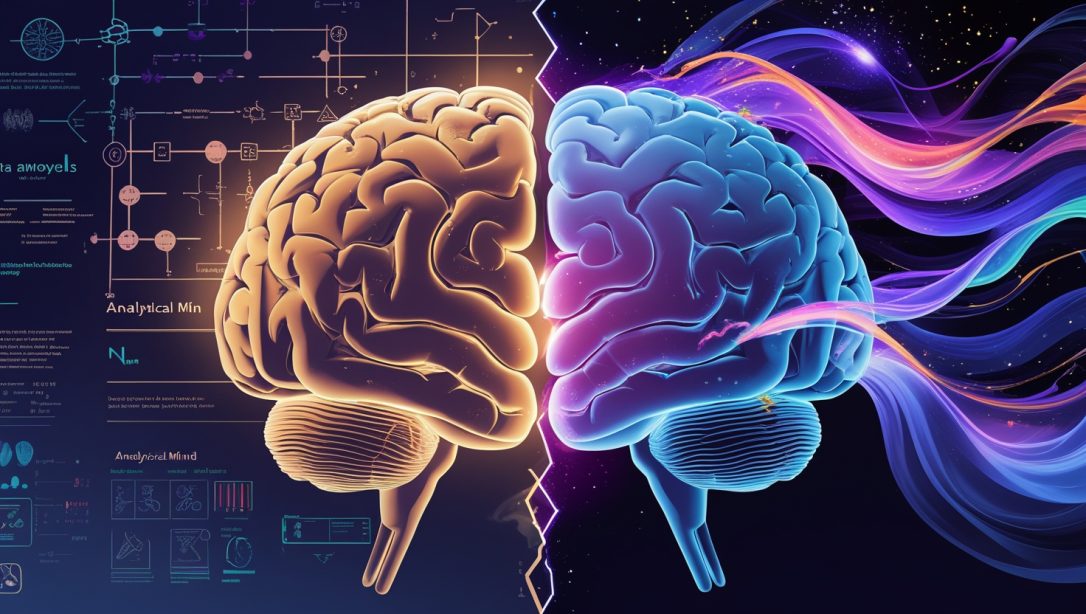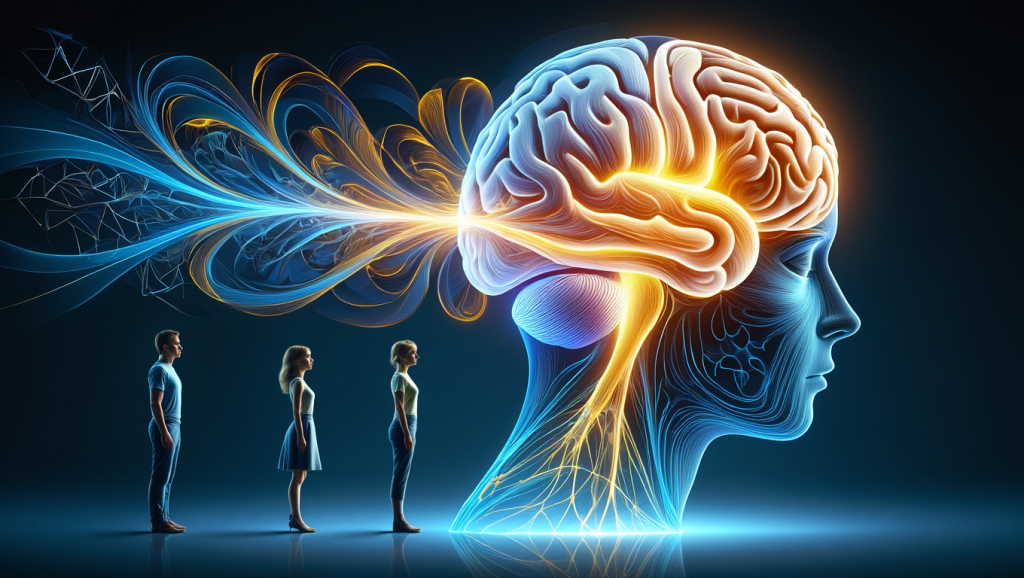Have you ever wondered why some people seem to enter hypnosis effortlessly while others find it challenging? Or why certain hypnotic approaches work wonders for your friend but leave you feeling frustrated? The answer lies in understanding your personal suggestibility type – a crucial factor that determines how your unique mind responds to hypnotic suggestions.
Why Suggestibility Type Matters
Suggestibility is your natural receptiveness to suggestions and influences. It’s not about gullibility or weakness of mind – quite the opposite. Research shows that suggestibility correlates with positive traits like creativity, empathy, and absorption capacity. Understanding your suggestibility type is the key to unlocking truly effective self-hypnosis practices tailored to your mental processing style.
As Dr. Richard Nongard, a leading researcher in clinical hypnosis explains: “The most important factor in successful hypnosis isn’t the script or even the hypnotist – it’s matching the approach to the individual’s natural mental processing style.”
The Two Primary Suggestibility Types
Neuroscience research has identified two primary suggestibility types, each associated with different brain processing patterns:
Analytical (Left-Brain Dominant)
Approximately 20% of the population falls into this category. If you’re analytically suggestible:
- You prefer logical, sequential information
- You may resist relaxation-based approaches
- Your mind stays active and questioning during hypnosis
- You respond better to indirect suggestions and mental puzzles
- You prefer understanding the “why” behind techniques
Brain imaging studies show that analytical types maintain higher activity in the left prefrontal cortex during hypnosis attempts, the brain region associated with logical reasoning and critical thinking.
Non-Analytical (Right-Brain Dominant)
Around 80% of people fall into this category. If you’re non-analytically suggestible:
- You can relax easily and “go with the flow”
- You respond well to imagery and emotion-based suggestions
- You enjoy the feeling of letting go
- You prefer direct suggestions and guided visualizations
- You may enter trance states naturally during daily activities
Neurologically, non-analytical types show increased activity in right-hemisphere regions associated with creativity, emotion, and holistic processing during hypnotic induction.
“Understanding your suggestibility type is like finding the right key for a lock. When matched correctly, the door to your subconscious opens effortlessly.”
How Life Experiences Shape Suggestibility
Interestingly, your suggestibility type isn’t fixed for life. Research shows that significant life events can temporarily or permanently shift your suggestibility profile:
- Major life transitions (divorce, career change)
- Traumatic experiences
- Significant health challenges
- Extended periods of high stress
These experiences can cause someone who was typically non-analytical to develop a more analytical approach as a protective mechanism, or conversely, may cause an analytical person to become more receptive to emotional processing.
Discovering Your Suggestibility Type: Self-Assessment
While professional hypnotic susceptibility scales exist in clinical settings, here’s a simplified self-assessment to help you identify your likely type:
Quick Self-Assessment Quiz
Answer yes or no to the following questions:
- On your day off, do you prefer relaxing over staying busy with projects?
- Do you easily become absorbed in music, movies, or books?
- Do you make decisions based more on feelings than logical analysis?
- Do you often find yourself daydreaming?
- When working, do you prefer background music?
- Do you enjoy letting others take the lead in group activities?
- Can you easily visualize scenes in your mind’s eye?
- Do you prefer taking breaks between tasks?
Scoring:
- 6-8 “yes” answers suggest a primarily non-analytical type
- 0-2 “yes” answers suggest a primarily analytical type
- 3-5 “yes” answers suggest a balanced type with characteristics of both
Remember, this is a spectrum rather than an either/or classification. Most people show characteristics of both types in different situations.
Physical Suggestibility Tests
For a more concrete determination, try these simple physical tests:
The Hand Clasp Test
- Interlock your fingers with index fingers pointing upward about 2 inches apart
- Focus your attention between the two fingers
- Imagine a magnetic force pulling your fingers together
- Observe what happens over 30 seconds
Results Interpretation:
- If your fingers move together easily: Primarily non-analytical
- If your fingers remain mostly stationary: Primarily analytical
- Partial movement: Mixed suggestibility type
The Arm Levitation/Heaviness Test
- Stand with arms extended in front of you
- Close your eyes
- Imagine your right arm has helium balloons tied to it, making it lighter
- Simultaneously imagine your left arm holds a heavy bucket of water
- Observe what happens over 60 seconds
Results Interpretation:
- If your arms move significantly in the suggested directions: Non-analytical
- If your arms remain mostly stationary: Analytical
- Slight movement: Mixed suggestibility type
Tailoring Self-Hypnosis to Your Type
Once you’ve identified your likely suggestibility type, you can customize your self-hypnosis approach for maximum effectiveness:
For Analytical Types
Effective Approaches:
- Confusion techniques: These overwhelm the analytical mind by giving it too much to process
- Mind-engaging methods: Counting backward while performing mental calculations
- Paradoxical suggestions: “Try to keep your eyes open” (when the goal is to close them)
- Intellectual understanding: Explaining the neuroscience of what’s happening
Sample Induction for Analytical Types: “As you sit there, I’d like you to become aware of seven different sounds in your environment… as you identify each sound, multiply 3 by itself… now divide that number by 2… while simultaneously visualizing the color blue changing to green… notice how this mental juggling naturally shifts your awareness…”
For Non-Analytical Types
Effective Approaches:
- Progressive relaxation: Systematically relaxing body parts
- Guided visualization: Creating detailed sensory experiences
- Emotional engagement: Evoking positive feelings and memories
- Direct suggestions: Clear, straightforward instructions
Sample Induction for Non-Analytical Types: “Take a deep breath in… and as you exhale, feel the tension melting from your shoulders… with each breath, you sink deeper into a pleasant state of relaxation… imagine yourself on a beautiful beach, feeling the warmth of the sun on your skin…”
For Mixed Types
If you show characteristics of both types, begin with the non-analytical approach to establish relaxation, then incorporate analytical elements to keep your mind productively engaged.
The Neuroscience Behind Suggestibility Types
Recent brain research provides fascinating insights into why different approaches work for different people:
- Analytical types show higher baseline activity in the prefrontal cortex and left hemisphere regions associated with language and logical processing.
- Non-analytical types demonstrate greater connectivity between emotional centers (limbic system) and sensory processing areas, allowing for easier engagement with imagined experiences.
- Default Mode Network activity (the brain’s “daydreaming” network) differs between types, with non-analytical individuals showing more natural fluctuation between focused and unfocused states.
Life Situations That Can Temporarily Alter Your Type
Interestingly, research shows certain life circumstances can temporarily shift your suggestibility type:
- Stress and exhaustion can make analytical types more receptive to direct suggestion approaches
- Creative immersion can help analytical types access more right-brain receptivity
- Technical or detailed work may temporarily shift non-analytical types toward more analytical processing
- Emotional upheaval can make anyone more suggestible regardless of their baseline type
Practical Applications of Suggestibility Knowledge
Understanding your suggestibility type has practical benefits beyond self-hypnosis:
- Learning approaches: Analytical types benefit from structured, sequential learning while non-analytical types excel with conceptual, big-picture approaches.
- Communication preferences: Analytical types appreciate clear evidence and logical reasoning; non-analytical types respond to stories and emotional resonance.
- Decision-making: Analytical types gather facts and weigh options systematically; non-analytical types trust intuitive insights and gut feelings.
- Stress management: Analytical types benefit from thought-restructuring techniques; non-analytical types respond better to emotional release methods.
Developing Flexibility Between Types
While you may have a natural tendency toward one suggestibility type, research shows you can develop greater flexibility with practice:
For analytical types developing non-analytical skills:
- Practice mindfulness meditation
- Engage in creative activities without judgment
- Develop your visualization abilities through guided imagery
For non-analytical types developing analytical skills:
- Practice logical puzzles and problem-solving
- Develop systems for organizing information
- Practice articulating the steps in your thought processes
The most successful practitioners of self-hypnosis ultimately develop the ability to shift between analytical and non-analytical modes as needed.
Conclusion: Personalized Path to Mental Mastery
Knowing your suggestibility type transforms self-hypnosis from a generic practice into a precision tool customized for your unique mind. Rather than forcing yourself to follow approaches that don’t align with your natural mental processing style, you can now select techniques that work harmoniously with your brain’s preferred patterns.
In our next post, we’ll explore nine effective self-hypnosis techniques you can practice at home, with specific variations for both analytical and non-analytical types.
Have you noticed whether you tend to process information more analytically or intuitively? Share your experiences and insights in the comments below!
Disclaimer: Suggestibility type assessments are tools for self-understanding rather than rigid classifications. Many people show characteristics of both types depending on context and can develop flexibility between approaches with practice.







